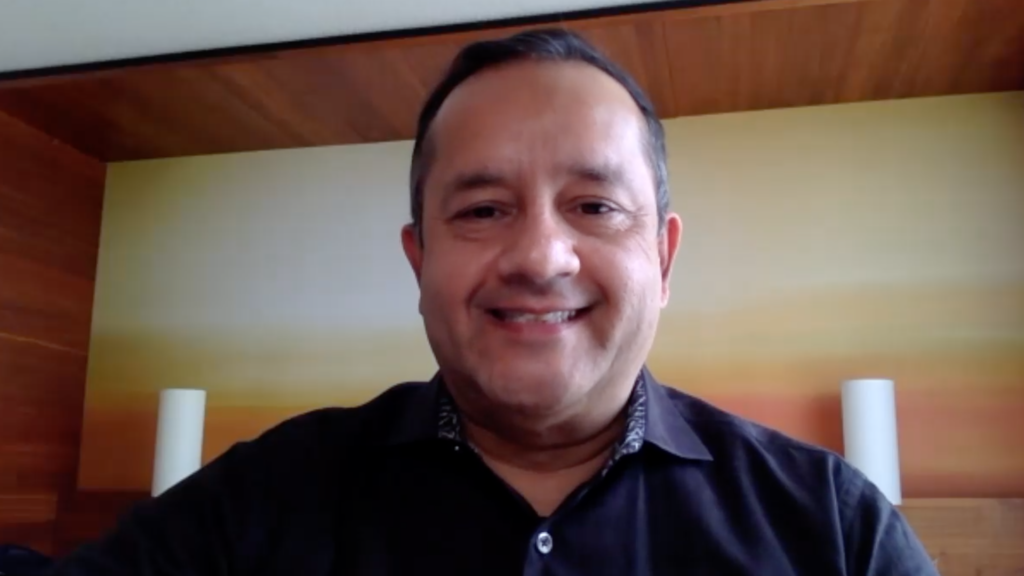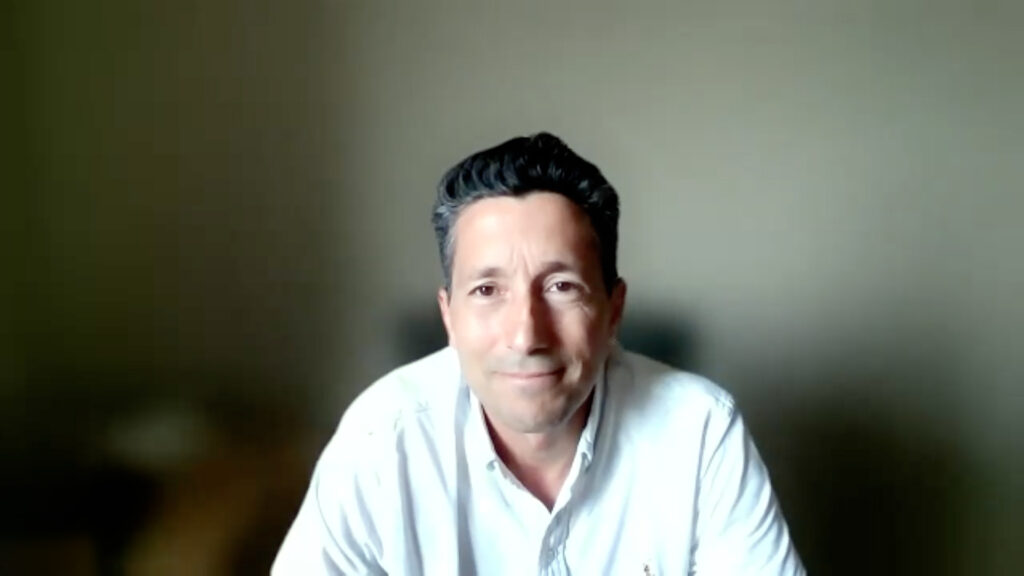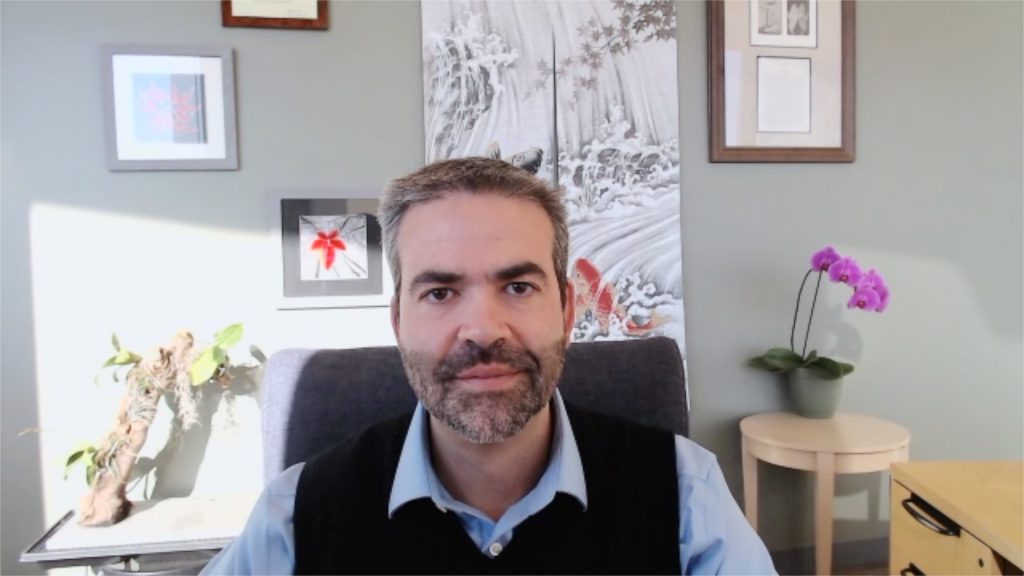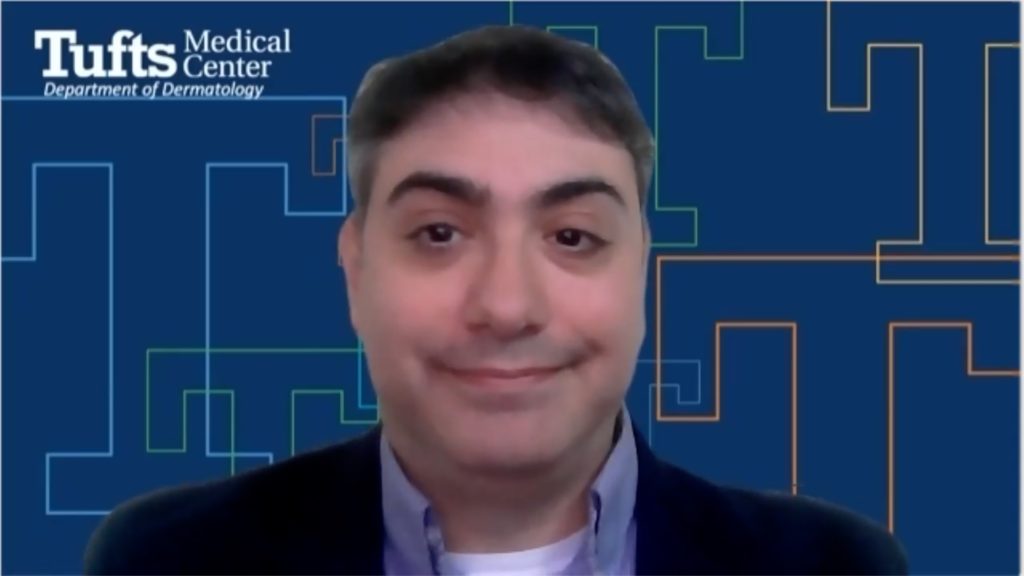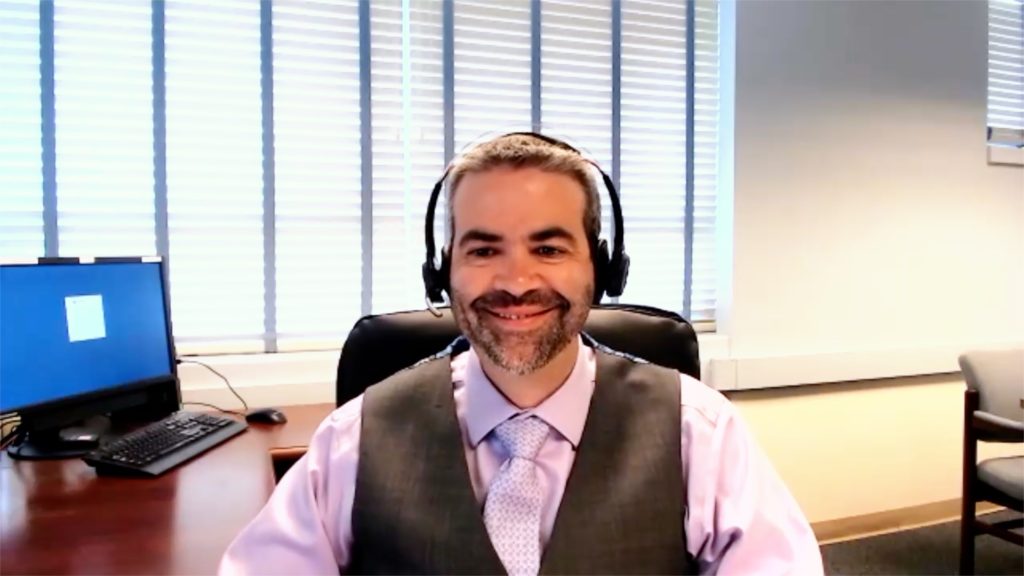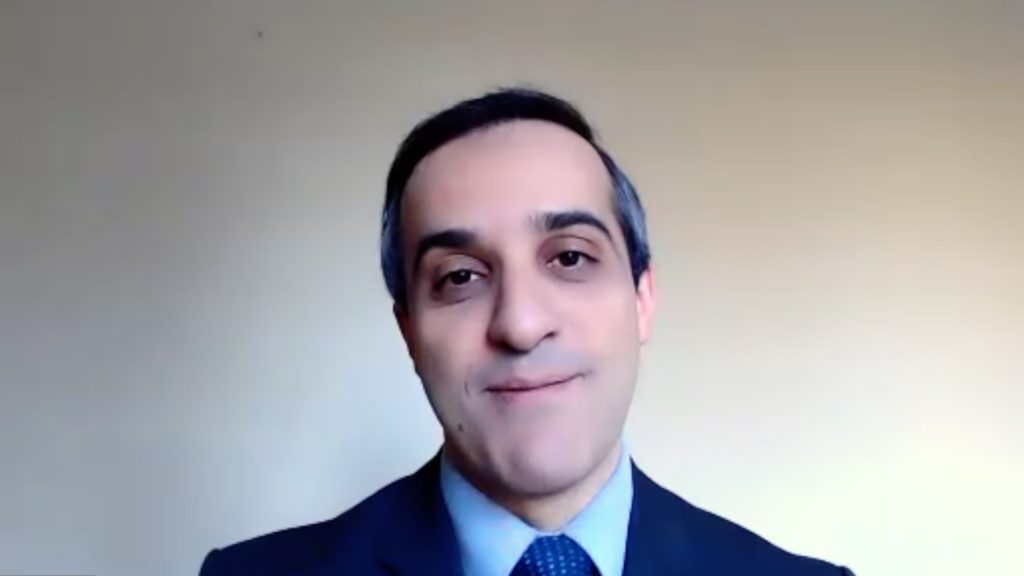Visionary Voices: Season 2, Episode 5
In this episode, we explore the future of continuing medical education (CME) with the team behind touchIME. Hannah Fisher and Matthew Goodwin share insights into global and US trends, the importance of patient inclusivity and how educational outcomes are evolving to better measure the direct impact of learning on clinical practice and patient care.
Useful links:
Transcript:
Nicky: Welcome back to Vision Voices. Nicky here, and today’s episode is all about the evolving world of medical education.
I’m joined by some of my colleagues from the touchIME team, Hannah Fisher, Head of Medical, and Matthew Goodwin, Head of Education Development, who are two of the driving forces behind touchIME’s mission to advance independent medical education and equip HPCs with the knowledge and confidence to improve patient care.
Together, we discuss medical education from both global and US perspectives, the impact of patient inclusivity, and the latest developments around educational outcomes — including touchIME’s new outcomes model, Touch LPI. Hannah, Matt, welcome to Visionary Voices, from a very sunny Bolton this Friday! Hannah: Thanks for having us. Matthew: Good to be here. Nicky: It’s been such a busy start to the year — it’s nice to finally find some time to catch up. So, I know both of you travelled over to Orlando in January — which feels like forever ago now — for the Alliance annual conference. Hannah, how did you find the meeting? Hannah: The meeting was brilliant. It was my first time attending the Alliance, and there were so many great sessions. I packed in as many as I could and sent Matt off to some I couldn’t attend myself. I learned so much. On top of that, I got the chance to meet people I’ve worked with but hadn’t met in person before, and also made some new connections in the industry. It was fantastic — I really hope I can go again next year. Nicky: Sounds like a very worthwhile meeting. So Matt, you came away with an award — the CPD Forty Under 40. Can you tell us a bit about that? Matthew: Yeah — I was nominated and had to fill out some paperwork, including my CV and background. I was lucky to be selected as part of a fairly small group of future leaders in the CPD world. It’s an acknowledgment of our contribution so far, and hopefully a springboard to further cement my involvement in the CME world, both in the US and internationally. It was a real privilege. There were about 800 attendees this year, and it was great to get up on stage and receive some recognition. A great conversation starter and good for networking too. Nicky: Absolutely — and well done. Very well deserved. I’ve worked with you for 11 years now — can you believe that? Matthew: Yeah! Nicky: And I’m not surprised at all. Congratulations again. Matthew: Thank you. Nicky: So today’s episode is all about medical education and the latest developments and innovations. Touch has been publishing content in a journal format for both US and global audiences for a long time. Thinking about medical education, what are the key differences between the US and global approaches? Matthew: I’ll jump in there. You’re right — we’ve been educating for a long time. Back in our print days, it was very separate — one version for the US and one for Europe. But now, with digital, we’ve merged that into a global journal, working with both US and international faculty. We’ve carried that over into the IME space. While pathophysiology and disease awareness don’t change, there are differences in things like drug availability and treatment guidelines across countries. We’re a truly global provider, with offices in the UK, Europe, and the US. We deliver education to big markets like the US and Europe, but also to China, Japan, the Middle East, and other regions. The big difference is that in the US, we typically work with an accreditor through joint providership and always include CME accreditation — it’s almost a prerequisite. In Europe, industry-sponsored education is more common, and IME is less widespread, so we sometimes do it more piecemeal. That said, we are a NEVAC-certified provider and offer accredited and non-accredited education depending on what’s needed. Nicky: It’s great to be so adaptable across markets. Hannah, can you share your experience working with both US and global faculty? Hannah: Absolutely. We have a really experienced medical team delivering our activities, with team members based in both the US and Europe. We’ve built strong relationships with US faculty — and as you mentioned, we also have a US editorial board and partnerships with US societies, so we can collaborate as needed. Just as an example — on our touchONCOLOGY platform this year, over 50% of the faculty we’ve worked with have been based in the US. Some activities were US-specific, others were global but included US faculty. In the past 12 months, we’ve launched around 30 activities primarily targeting US audiences — and we’ve seen fantastic outcomes. In a sample of those, over 50% of participants said they would change their practice as a result of taking part. Global education is more challenging — especially because we aim to make our content accessible to busy HCPs. So we often keep activities around 30 minutes and break them into shorter chapters. We work hard with faculty to ensure content is as applicable as possible. We give detailed briefings and ask them to flag what’s globally relevant versus more country- or institution-specific, such as drug approvals or guidelines. We also offer translations and other support to make content accessible across regions. Nicky: A great approach to working with faculty — and those outcomes are impressive. We’ll come back to outcomes shortly. First, let’s talk about the role of the patient in CME, which I know is a big topic right now. I recently ran a survey across our editorial boards and faculty, asking about the impact of patient inclusivity in CME. Around 60% said that incorporating patient perspectives significantly improves the depth of learning for HCPs. How do you see CME evolving to become more patient inclusive, and what role do patient perspectives play in shaping education? Matthew: Great question. Hannah’s more involved once a grant is supported, but from my side, patient centricity has been a buzzword for a long time. Industry now recognises just how important it is. We’ve been working with patients for years. One phrase that’s always stayed with me is “Nothing about us without us” — said by a patient advocate — and it really resonates. There was a thread at Alliance on this topic. It’s still important, though maybe not as dominant as some others now. But not everyone is doing it well. We now talk more about patient inclusive or patient-led education. We involve patients or caregivers right from the outset — during needs assessments, alongside faculty interviews and literature reviews. They’re integral to the programme, not just bolted on at the end. This kind of partnership is crucial — it cultivates trust between patients and HCPs, which is key. Nicky: In our survey, one key finding was that including patient perspectives encourages HCPs to involve patients more in shared decision-making. Hannah, what’s your perspective, as someone working directly on activities? Hannah: I’m really pleased to say that 8 of our 10 therapy area platforms currently have live activities that include a patient, advocate, or caregiver on the faculty — and more are in development. Soon, we’ll be able to say that’s true across all 10. We’ve shown it’s possible to work with patients across therapy areas — from breast cancer and diabetes to Alzheimer’s. A recent example is a touchMDT activity focused on antibody-drug conjugates in metastatic breast cancer, particularly on toxicity. We included an oncologist, nurse, pharmacist, and patient advocate. The need to include the patient was clear from the outset. It helped ensure communication around side effects, encouraged shared decision-making, and brought a unique, practical perspective to the activity. We involve patients as true faculty members — from briefings to feedback on content. When I asked the team what they felt the benefits were, they highlighted how patients brought different, valuable perspectives that HCPs don’t always consider — particularly the lived experience. For example, in that breast cancer activity, the patient shared how and when they wanted to receive information about side effects in a way that didn’t feel overwhelming. I don’t have the outcomes yet — it only launched this week — but I’m excited to see them. Nicky: Thank you — it really highlights how impactful patient inclusion can be. Interestingly, many HCPs in our survey said they rarely come across patient perspectives in the CME they access. Matt, can you tell us more about touchIME’s ongoing efforts in this area? Matthew: Yes — we’ve launched several formats that really embed the patient voice. Hannah mentioned the touchMDT — a multidisciplinary format where the patient is central. It’s been one of our most popular and fastest-growing formats. We’ve also developed touchCASES, which is inherently patient-focused. While we include patients in many formats, there are times, such as certain symposia, where it’s not appropriate to have patients on stage. In those cases, we might interview a patient in advance and include their story in an introductory video — which is a powerful way to set the scene. Even here on Visionary Voices, you featured a bonus episode with a physician and patient advocate in asthma. It just goes to show how deeply patient perspectives run through all our work. Nicky: Yes — that was from Season 1. I’ll include a link in the episode description for anyone who’d like to go back and listen. Let’s turn to outcomes. Educational outcomes are crucial for measuring the impact of an activity on HCPs — and ultimately patients. How is touchIME evolving its approach to outcomes measurement? Matthew: Outcomes are hugely important. We need to show that we’ve reached our intended audience and met our learning objectives. We start by identifying the educational gaps and outcomes we want to see — and then work backwards to choose the right format and approach. We’ve always followed Moore’s levels — participation, satisfaction, knowledge, competence, and so on. We also go further, measuring confidence as a proxy for behavioural change, and we include both quantitative and qualitative insights — asking what changes HCPs plan to make, not just if they plan to make them. But we’re now moving beyond the linear model. We recently launched the LPI — learner-to-patient impact — which is cyclical and dynamic. It includes more data points and feedback loops, and better reflects how modern learners engage with content. It’s about understanding the problem, measuring the change, and generating actionable insights — both for future programmes and for our supporters. Nicky: The LPI model sounds like a big step forward. Have you seen any outcomes yet? Matthew: Yes — we’ve piloted one activity, and the results were outstanding. The difference isn’t necessarily in the data we gather — it’s in how we’re pulling it together, and the flow of the report. It’s more cohesive, more insightful. We’re applying scientific storytelling, something we’ve used for years in our activities — like touchTALKS, which distils complex data into clear visual explanations. Now we’re applying that same storytelling approach to outcomes reporting. Nicky: Hannah, what are your thoughts? Hannah: Matt summed it up really well. It’s an exciting time at touchIME as we start to transition to the LPI model. It’s been widely acknowledged that Moore’s framework is being used in ways it wasn’t designed for. Moving towards a model that focuses on the learner journey — and ultimately patient outcomes — is incredibly important. The Alliance meeting had so many great sessions on outcomes, and it’s an area we’ll keep learning and evolving in. We’re not aiming for perfection overnight, but we’re committed to continuous improvement. Nicky: Before we wrap up, we have to touch briefly on AI. What impact is AI having — or about to have — on medical education? Matthew: It’s the hot topic. We didn’t dive into it earlier because we didn’t want to keep people here for hours! But yes — we’re adopting AI in smart, responsible ways. We’re using it to increase efficiency, not replace people. Copyright is a key concern, so we’re being cautious and deliberate. Hannah: Yes, we’ve set up an internal AI task force to make sure we’re using it appropriately. The Alliance has also released a framework to guide ethical and effective use, which we’re referencing. Like outcomes, it’s a constantly evolving area, and we’re committed to staying up to date. Matthew: There was some nervousness initially, but now we all recognise that it’s a tool to help us do more of what we already do well — not a replacement. Nicky: I couldn’t agree more. As a tool, it’s incredibly useful. Thank you both for such a great discussion — I look forward to hearing more about your new formats and strategies over the rest of the year. Matthew: Pleasure to be here. Thanks, Nicky. Nicky: And thanks to our audience for listening. Don’t forget to subscribe to Visionary Voices on Spotify, Apple Podcasts, Amazon Music or Podbean. Goodbye for now.

As Head of Medical at touchIME, Hannah Fisher leads a team of medical directors, writers, and editors to ensure the strategic and scientific excellence of all educational content. Hannah is responsible for overseeing the development and delivery of high-quality grant requests and educational activities, ensuring scientific accuracy, relevance, and alignment with educational objectives and industry standards.
 As Head of Education Development at touchIME, Matthew Goodwin leads the talented Education Development team in identifying areas of unmet educational need across a broad range of therapy areas. His contributions to the field were recognised in 2025 with the Alliance ‘CPD Forty under 40’ award, honouring the next generation of leaders driving innovation and excellence in medical education.
As Head of Education Development at touchIME, Matthew Goodwin leads the talented Education Development team in identifying areas of unmet educational need across a broad range of therapy areas. His contributions to the field were recognised in 2025 with the Alliance ‘CPD Forty under 40’ award, honouring the next generation of leaders driving innovation and excellence in medical education.
This content has been developed independently by Touch Medical Media. Unapproved products or unapproved uses of approved products may be discussed; these situations may reflect the approval status in one or more jurisdictions. No endorsement of unapproved products or unapproved uses is either made or implied by mention of these products or uses by Touch Medical Media. Views expressed are the speaker’s own and do not necessarily reflect the views of Touch Medical Media.

